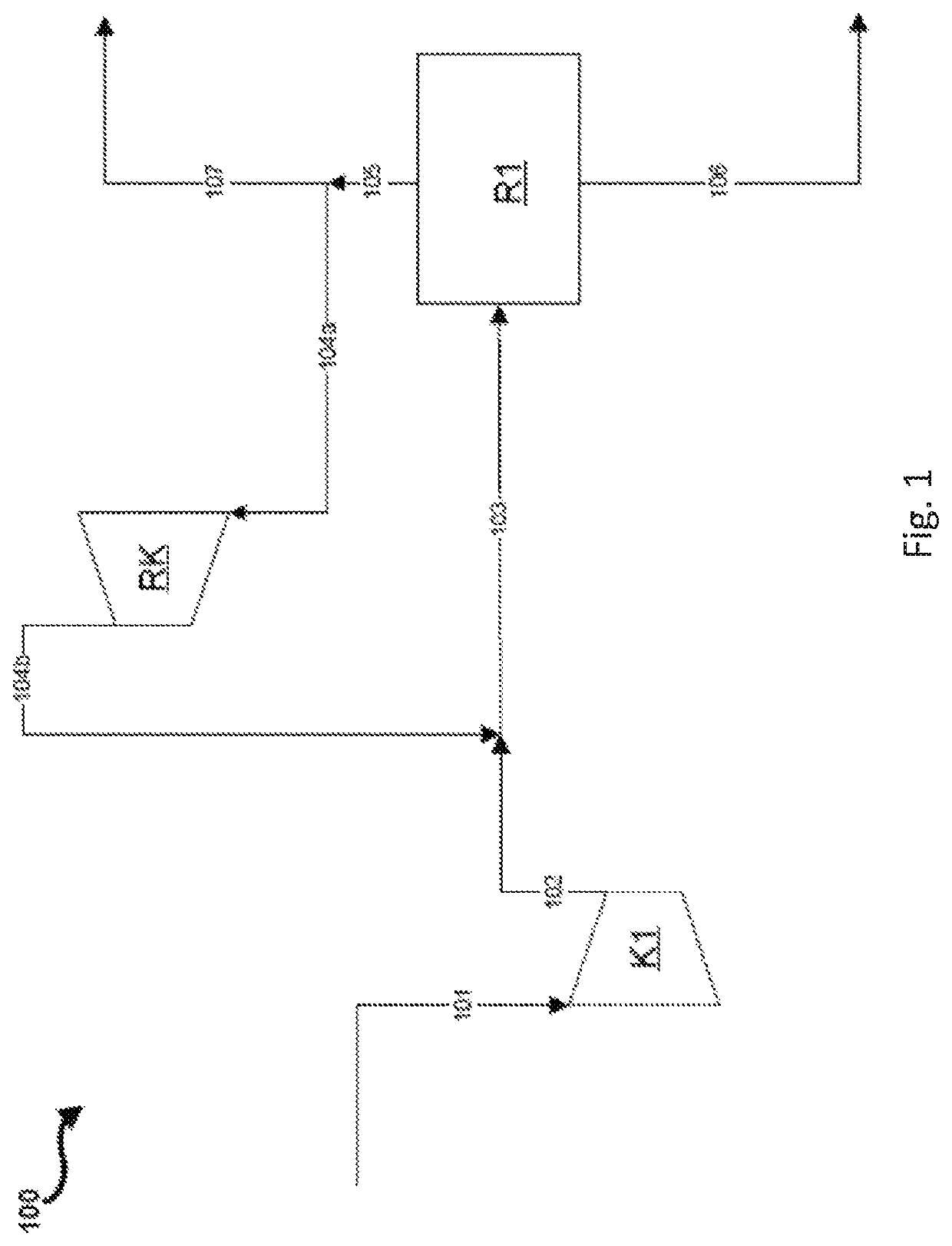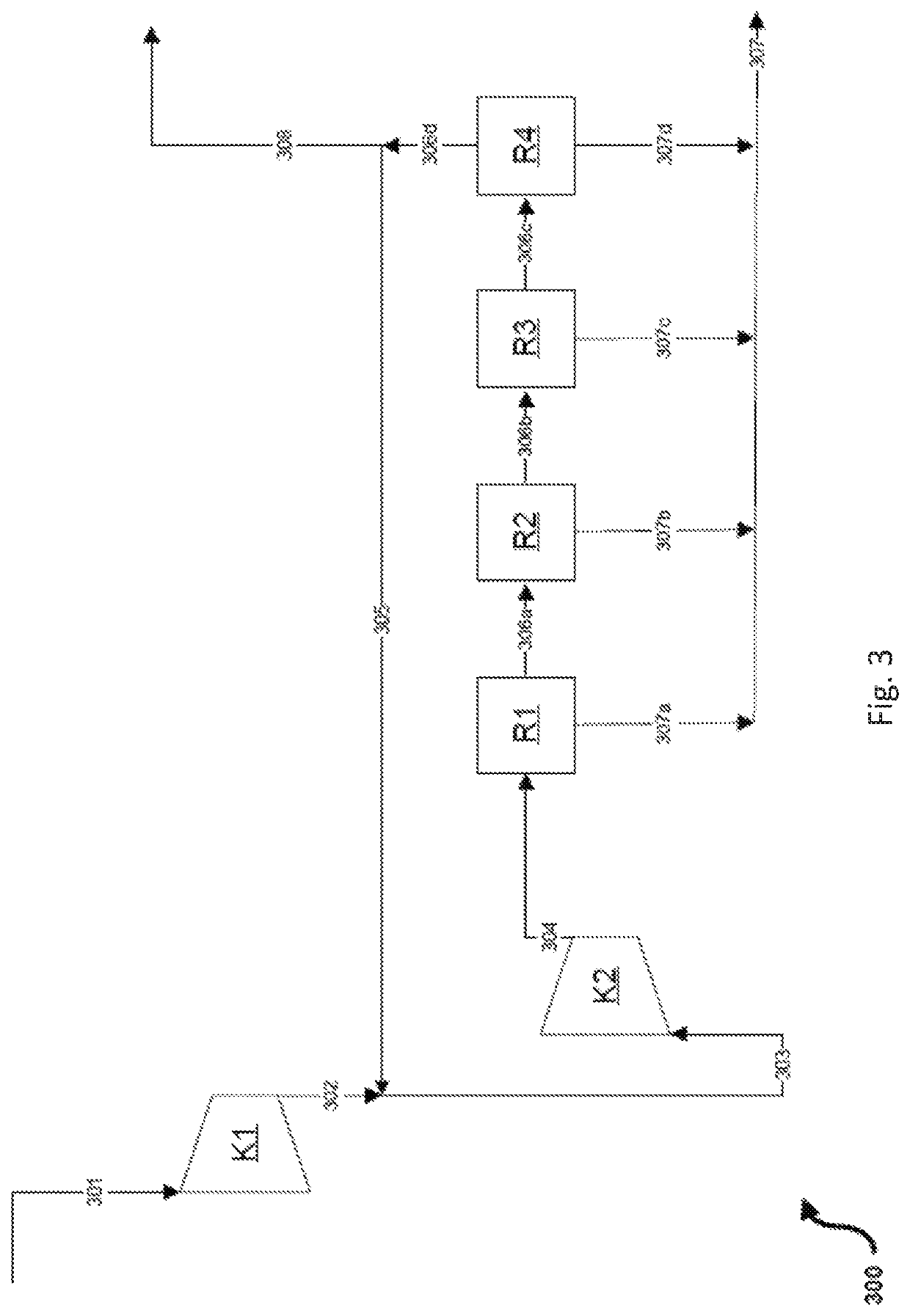Process and plant for producing methanol
a technology of methanol and methanol injection, which is applied in the direction of chemical/physical/physical-chemical processes, chemical apparatus and processes, organic chemistry, etc., can solve the problems of increasing the total capital expenditure (capex) cost of the plant, requiring subsequent recovery at great cost and inconvenience, and accumulating inert constituents, etc., to avoid hydrogen loss, reduce catalyst loading, and prolong the life of the catalyst used
- Summary
- Abstract
- Description
- Claims
- Application Information
AI Technical Summary
Benefits of technology
Problems solved by technology
Method used
Image
Examples
Embodiment Construction
[0110]FIG. 1 shows a much simplified schematic block flow diagram of a production process for methanol comprising a recycle gas compressor stage in a synthesis circuit comprising a single reactor stage and a single compressor stage for fresh gas.
[0111]A first compressor stage K1 is supplied with a fresh gas stream 101 at a pressure of 34 bar. The fresh gas has a hydrogen proportion of 68.9% by volume, a carbon monoxide proportion of 18.9% by volume and a carbon dioxide proportion of 10.5% by volume. Due to the molar ratios of the fresh gas components the fresh gas for the fresh gas stream 101 has a stoichiometry number SN of 2.00. The fresh gas stream 101 is compressed by the first compressor stage K1, thus affording a second fresh gas stream 102 on the pressure side of the compressor stage K1. The second fresh gas stream 102 is combined with the recycle gas stream 104b; thus resulting in a combined gas stream referred to here as synthesis gas stream 103. The compression by compress...
PUM
| Property | Measurement | Unit |
|---|---|---|
| pressures | aaaaa | aaaaa |
| pressures | aaaaa | aaaaa |
| pressure | aaaaa | aaaaa |
Abstract
Description
Claims
Application Information
 Login to View More
Login to View More - R&D
- Intellectual Property
- Life Sciences
- Materials
- Tech Scout
- Unparalleled Data Quality
- Higher Quality Content
- 60% Fewer Hallucinations
Browse by: Latest US Patents, China's latest patents, Technical Efficacy Thesaurus, Application Domain, Technology Topic, Popular Technical Reports.
© 2025 PatSnap. All rights reserved.Legal|Privacy policy|Modern Slavery Act Transparency Statement|Sitemap|About US| Contact US: help@patsnap.com



